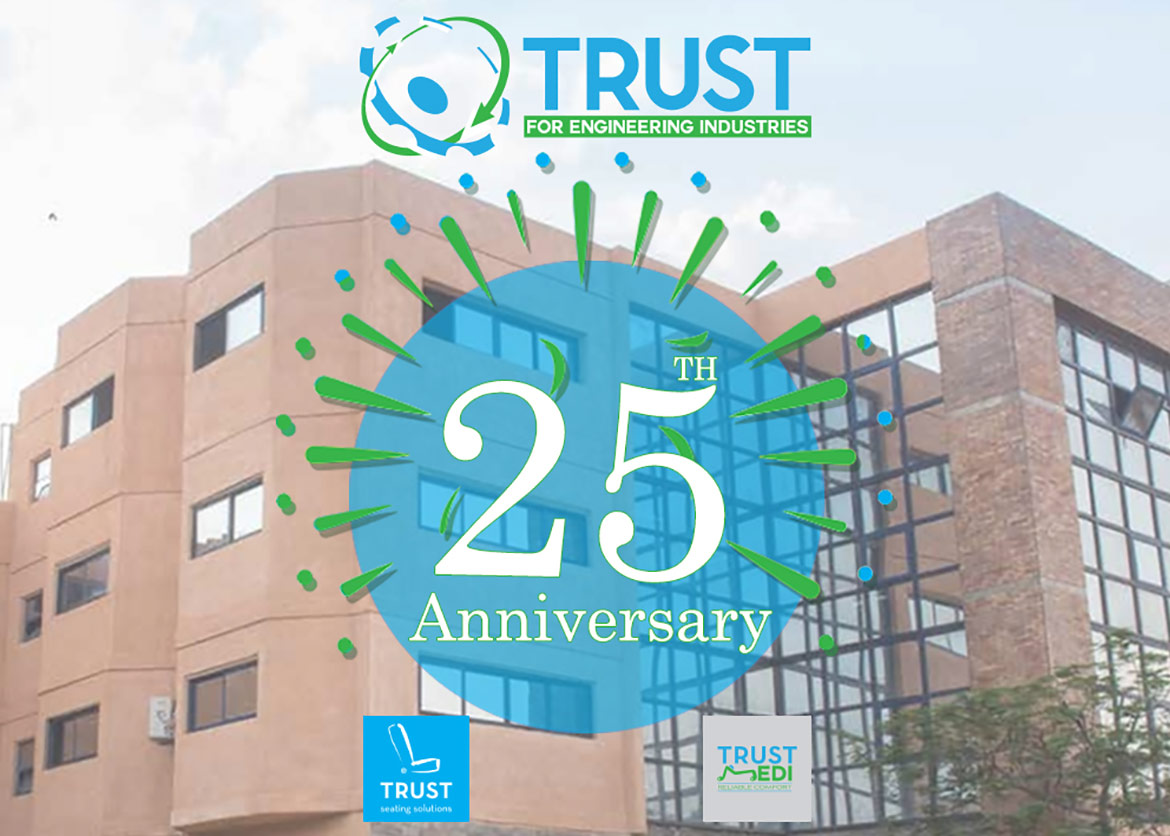Trust media has become one of the most critical pillars of modern society. In a world where misinformation spreads faster than ever, understanding what trust media really means can make all the difference. Imagine a space where the news you consume is reliable, accurate, and free from hidden agendas. That’s what trust media is all about. It’s not just about reporting facts—it’s about creating a bond with the audience that says, “Hey, we’ve got your back.”
Nowadays, people are constantly bombarded with information from every corner of the internet. Social media platforms, blogs, and even so-called “news” websites often blur the lines between fact and fiction. But trust media stands tall in this chaotic landscape, offering a beacon of truth and reliability. It’s like finding a solid rock in the middle of a stormy sea.
Think about it—how many times have you come across headlines that seem too good to be true? Or worse, too bad to ignore? That’s where trust media comes in. It’s all about building a relationship with its audience, ensuring that the information shared is not only accurate but also transparent. So, buckle up because we’re diving deep into the world of trust media, exploring what it is, why it matters, and how you can identify it in today’s digital jungle.
Read also:Erome Camilla Araujo The Rising Star Whos Captivating The World
What Exactly is Trust Media?
Alright, let’s break it down. Trust media refers to any form of media outlet that prioritizes accuracy, transparency, and ethical journalism above all else. These outlets go the extra mile to ensure that the information they provide is not only correct but also presented in a way that’s easy to understand. It’s like having a friend who always tells you the truth, even when it’s hard to hear.
One of the key characteristics of trust media is its commitment to fact-checking. Before any story is published, it undergoes rigorous scrutiny to ensure its validity. This might involve cross-referencing multiple sources, interviewing experts, or even conducting in-depth investigations. The goal is simple: to give the audience the most accurate information possible.
But here’s the thing—trust media isn’t just about the facts. It’s also about the way those facts are presented. These outlets strive to remain unbiased, avoiding sensationalism or clickbait headlines that might distort the truth. It’s all about maintaining integrity, which is why trust media outlets are often seen as the gold standard in journalism.
Why Does Trust Media Matter?
In today’s digital age, trust media plays a crucial role in shaping public opinion and informing citizens. With so much misinformation floating around, having reliable sources of information is more important than ever. Think of trust media as the gatekeeper of truth, standing firm against the tide of fake news and propaganda.
For starters, trust media helps people make informed decisions. Whether it’s about politics, health, or finance, having access to accurate information can make all the difference. Imagine trying to navigate the stock market without reliable data or making healthcare choices based on misleading information. Trust media ensures that the audience has the tools they need to make smart, well-informed decisions.
Moreover, trust media fosters a sense of community. When people have access to reliable information, they’re more likely to engage in meaningful conversations and debates. This, in turn, strengthens democracy and promotes social cohesion. It’s like having a town hall meeting where everyone is on the same page, working towards common goals.
Read also:Brad Pitt Lifting The Ultimate Guide To His Workout And Fitness Journey
Key Characteristics of Trust Media
So, what makes trust media so special? Here are some of the key characteristics that set it apart from the rest:
- Accuracy: Trust media outlets go to great lengths to ensure that every piece of information they publish is accurate and reliable.
- Transparency: They’re open about their sources, methodologies, and potential conflicts of interest. It’s all about being upfront with the audience.
- Impartiality: Trust media strives to remain unbiased, presenting both sides of a story without taking sides. It’s about giving the audience the full picture.
- Accountability: If mistakes are made, trust media outlets are quick to admit them and take corrective action. It’s all about maintaining trust with the audience.
How to Identify Trust Media
Now that we know what trust media is and why it matters, let’s talk about how to identify it. In a world where anyone can publish anything online, distinguishing between trustworthy sources and unreliable ones can be tricky. But don’t worry—we’ve got you covered.
First things first, look for outlets that have a proven track record of accuracy and reliability. Check their history—have they been involved in any scandals or controversies? What do experts and other journalists say about them? These are all important factors to consider.
Next, pay attention to their sources. Trust media outlets are transparent about where they get their information from. They’ll often cite multiple sources and provide links to original documents or studies. It’s like leaving a trail of breadcrumbs for the audience to follow.
Finally, consider the tone and presentation of the content. Trust media tends to avoid sensationalism and clickbait headlines, focusing instead on delivering the facts in a clear and concise manner. It’s all about substance over style.
Red Flags to Watch Out For
While identifying trust media is important, it’s equally crucial to know what to avoid. Here are some red flags to watch out for when evaluating a media outlet:
- Clickbait Headlines: If the headline seems designed to shock or provoke an emotional response, it might be a sign of unreliable journalism.
- Lack of Sources: Trust media outlets are transparent about their sources. If an article doesn’t provide any, that’s a major red flag.
- Biased Reporting: While it’s impossible to be completely unbiased, trust media strives to present both sides of a story. If an outlet consistently takes one side, it might not be trustworthy.
The Role of Fact-Checking in Trust Media
Fact-checking is the backbone of trust media. It’s the process of verifying the accuracy of information before it’s published, ensuring that the audience receives reliable and truthful content. But how exactly does it work?
Fact-checking involves a rigorous process of cross-referencing information with multiple sources, consulting experts, and conducting in-depth investigations. It’s not just about checking facts—it’s about ensuring that the context and implications are also accurate. Think of it as a quality control mechanism for journalism.
Moreover, fact-checking helps combat misinformation and fake news. By holding media outlets accountable for the accuracy of their reporting, fact-checking organizations play a vital role in maintaining the integrity of the media landscape. It’s like having a watchdog that ensures everyone plays by the rules.
Popular Fact-Checking Organizations
There are several reputable fact-checking organizations that work tirelessly to ensure the accuracy of news and information. Here are a few worth mentioning:
- Snopes: One of the oldest and most respected fact-checking websites, Snopes specializes in debunking urban legends, myths, and misinformation.
- FactCheck.org: Run by the Annenberg Public Policy Center, FactCheck.org focuses on political fact-checking, ensuring that politicians and public figures are held accountable for their statements.
- PolitiFact: Another prominent player in the fact-checking world, PolitiFact uses a Truth-O-Meter to rate the accuracy of political statements.
The Challenges Facing Trust Media
Despite its importance, trust media faces numerous challenges in today’s digital age. From declining revenues to the rise of social media, these outlets are under constant pressure to adapt and evolve. But what are the biggest challenges they face?
One of the main challenges is the decline in traditional advertising revenue. With more people consuming news online, many trust media outlets struggle to monetize their content effectively. This has led to budget cuts, staff layoffs, and a reduction in the quality of journalism.
Another challenge is the rise of social media as a primary source of news. While platforms like Facebook and Twitter have made it easier for people to access information, they’ve also contributed to the spread of misinformation. Trust media outlets must now compete with these platforms for audience attention, often at the expense of quality.
Finally, there’s the issue of audience trust itself. In a world where misinformation is rampant, many people have become skeptical of traditional media outlets. Trust media must work harder than ever to rebuild that trust and prove their worth to the audience.
Solutions to the Challenges
So, how can trust media overcome these challenges? Here are a few potential solutions:
- Subscription Models: Many trust media outlets are turning to subscription-based models to ensure a steady stream of revenue. This allows them to focus on quality journalism without worrying about ad revenue.
- Collaboration: By partnering with other outlets and organizations, trust media can pool resources and expertise, maximizing their impact and reach.
- Engagement: Building stronger relationships with their audience through interactive content, social media, and community events can help trust media outlets regain trust and loyalty.
Trust Media and Its Impact on Society
The impact of trust media on society cannot be overstated. From shaping public opinion to influencing policy decisions, these outlets play a vital role in informing and educating citizens. But what exactly is their impact?
For starters, trust media helps hold those in power accountable. By investigating corruption, exposing scandals, and shedding light on important issues, these outlets ensure that no one is above the law. It’s like having a watchdog that keeps everyone honest.
Moreover, trust media promotes civic engagement and participation. When people have access to reliable information, they’re more likely to get involved in their communities, vote in elections, and advocate for change. It’s all about empowering the audience to make a difference.
Finally, trust media fosters a culture of transparency and accountability. By setting high standards for journalism and holding others to those standards, these outlets help create a more informed and engaged society. It’s like building a foundation of trust that everyone can stand on.
Case Studies of Trust Media in Action
To better understand the impact of trust media, let’s look at a few case studies:
- Watergate Scandal: Perhaps the most famous example of trust media in action, the Washington Post’s investigation into the Watergate scandal led to the resignation of President Nixon. It’s a testament to the power of journalism in holding those in power accountable.
- Pandemic Reporting: During the COVID-19 pandemic, trust media outlets played a crucial role in disseminating accurate information about the virus, its spread, and preventive measures. This helped save countless lives and prevent widespread panic.
- Climate Change Coverage: Trust media has been at the forefront of covering the climate crisis, raising awareness about its impact and advocating for action. This has helped shift public opinion and influence policy decisions.
The Future of Trust Media
Looking ahead, the future of trust media looks both promising and challenging. With advancements in technology and the rise of new media platforms, these outlets have both opportunities and obstacles to navigate. But what does the future hold?
One trend to watch is the increasing use of data-driven journalism. By leveraging big data and analytics, trust media outlets can provide deeper insights and more personalized content to their audience. This not only enhances the quality of journalism but also increases engagement and loyalty.
Another trend is the growing importance of multimedia storytelling. With more people consuming news through video, podcasts, and social media, trust media outlets must adapt to these changing preferences. This means investing in new formats and platforms to reach a wider audience.
Finally, the rise of artificial intelligence and machine learning presents both opportunities and challenges for trust media. While these technologies can help automate certain aspects of journalism, they also raise concerns about bias and accuracy. It’s a delicate balance that trust media outlets must navigate carefully.
How You Can Support Trust Media
So, how can you, as a reader, support trust media? Here are a few ways:
- Subscribe: By subscribing to trust media outlets, you’re helping to ensure their financial stability and independence.
- Share: Spread the word about trust media by sharing their content with your friends and family. The more people who support them, the stronger they become.
- Engage: Get involved with trust media by commenting on articles, participating in discussions, and providing feedback. This helps them understand their audience better and improve their content.
Conclusion
In conclusion, trust media plays a vital role in shaping our understanding of the world. From providing accurate information to holding those in power accountable, these outlets are the backbone of a healthy democracy. But they face numerous challenges in today’s digital age, from declining revenues to the rise of misinformation.
By supporting trust media through subscriptions, sharing, and engagement, we can help ensure that they continue to thrive and provide the quality journalism we all


